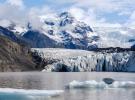Climate Change Boosted Record-Breaking 2023 Wildfires, and Higher Emissions Will Continue the Trend: Studies
Human-driven climate change “significantly increased” the likelihood that record-breaking swaths of Canada’s forests would burn in the 2023 fire season, says new research led by Environment and Climate Change Canada.
The report was one of two reviews in major academic journals in recent weeks, produced by research teams from Environment and Climate Change Canada, the Canadian Forest Service, and several Canadian universities.
Wildfires burned 15 million hectares across Canada in 2023—more than double the previous record set in 1989—and a warming climate played a significant role in the conflagrations. Such is the conclusion of a climate modelling study produced by Environment and Climate Change Canada, the Canadian Forest Service, and a scholar from the University of Victoria, published in the journal Nature in December.
Human-induced climate change “significantly increased” the chances of experiencing 2023’s record annual area burned amount, the authors write.
Human influence on the climate also made it “more than five times as likely” that the 2023 fire season would be a very long one. “Substantial areas” across the country burned “almost continuously” for nearly six months in 2023—fire activity that kept Canada “at its highest National Preparedness Level for an unprecedented 120 continuous days,” the study notes.
“Longer fire seasons provide a longer window for fire-conducive weather to occur and limit the opportunities for prescribed burns for wildfire mitigation, which can lead to more large wildfires,” the authors write.
The widespread incidence of “synchronous extreme fire weather” throughout the country was made “much more likely” thanks to anthropogenic climate change.
Weather feeds wildfires primarily by drying out available fuels—both decaying organic material on the forest floor, known as “duff,” and the living trees themselves. Strong winds and/or storms can also fan flames.
The 2023 fire season produced correspondingly ferocious levels of carbon dioxide (CO2) emissions. The Nature study pegged the season’s emissions at 700 teragrams of CO2, or eight times the mean for 1985–2022. (One teragram is a million tonnes.)
Absent radical reductions in emissions, things are only going to get worse, the study warns.
“Further increases in the likelihood of long fire seasons, extreme fire weather, and large burned areas are anticipated for Canada,” with “most regions projected to experience at least a two-fold increase in the likelihood of [an area equivalent to] the 2023 area burned” in the future, under climate conditions of “high warming”.
Published just days after the Nature article, new research published in the journal Science confirms “marked” increases in wildfire burn severity (a metric that measures changes to organic matter, both above and below ground, in the wake of a wildfire) between 1981 and 2020. The most recent 20 years show “significant” increases in the number of fire season days “conducive to high-severity” burning, especially in conifer-heavy northern regions.
Identifying the amount of fuel available for combustion and the moisture content of the “duff” as the “most influential drivers” of burn severity, researchers from the University of British Columbia and the Canadian Forest Service said such findings “demonstrate the critical role that drought plays in burn severity of the Canadian forests”. They warn of the “pressing need for proactive strategies to mitigate the increasing threat posed by climate change.”
Co-author of the Science paper and Canadian Forest Service research scientist Xianli Wang told CBC News that worst-hit regions saw an additional five days “conducive to high-severity fires” in the first two decades of the 21st century, compared to the final two decades of the 20th.
“While that may not sound like much, last summer’s devastating wildfire in Jasper, Alberta, grew to about 60 square kilometres in a matter of hours,” CBC writes.
Cover photo: Tammy Gauthier Neal/Facebook



